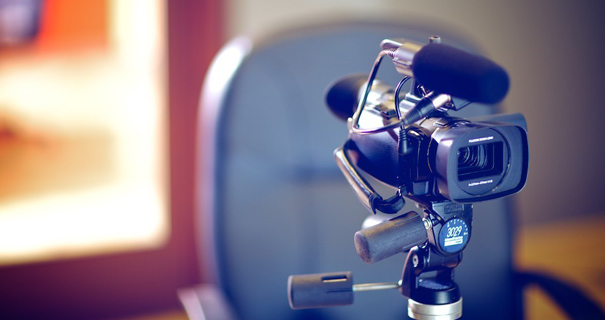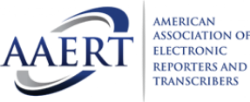The Role of Trial Presentations in Creating Compelling Closing Arguments
The Role of Trial Presentations in Creating Compelling Closing Arguments
Blog Article
Why Solid Test Presentations Are Secret to Lawful Success
The significance of strong test discussions can not be overemphasized in the world of lawful method. These presentations work as the primary lorry for conveying debates and evidence, essentially forming juror understandings and affecting their decision-making processes. A well-crafted narrative, boosted by calculated visual help and psychological engagement, promotes a profound link with jurors, inevitably impacting their understanding of the instance. The subtleties of successfully adjusting these discussions to varied juror histories present complexities that merit additional exploration, especially in the context of attaining favorable outcomes in tests.
Relevance of Effective Interaction
Exactly how can efficient interaction shape the end result of a lawful trial? Efficient communication is vital in a legal setting, as it works as the avenue where debates, proof, and legal concepts are communicated to discretionary. Clear articulation of facts and legal criteria permits for a persuasive discussion that can significantly influence the decision-making process. In the courtroom, the capability to present complex information in an available manner is vital, as jury participants might not have a legal background.
Moreover, effective interaction promotes connection and trust between lawyers and their customers, improving collaboration and making certain that all parties are aligned in their goals. It also plays a critical duty in jury choice and engagement, where the ability to attach with jurors can influence their receptiveness to the instance. In addition, non-verbal communication, such as body language and eye contact, adds to the total impact an attorney makes, enhancing verbal messages.
Ultimately, mastering effective communication can result in a much more compelling and meaningful presentation, increasing the possibility of a desirable judgment. Thus, attorneys need to focus on refining their communication abilities as a cornerstone of their test prep work and strategy.

Crafting an Engaging Story
Efficient communication lays the foundation for crafting a compelling story in legal trials. A well-structured story not just engages the jury but likewise clears up intricate lawful issues. The goal is to present the realities in a method that reverberates mentally and realistically with the audience, allowing them to comprehend the instance from the customer's point of view.
To achieve this, lawyers must identify the main theme or message of the instance, which acts as the foundation of the narrative. Each piece of evidence and witness testimony ought to be woven right into this theme, strengthening it rather than interfering with it. This produces a cohesive storyline that is easy for the court to comply with.
In addition, making use of relatable personalities-- be it the plaintiff, defendant, or vital witnesses-- can humanize the situation, making it more unforgettable. Lawyers should additionally consider the pacing of their narrative, making certain that defining moments are highlighted which the tale unfolds in a rational development.
Inevitably, an engaging narrative transforms the discussion of realities right into an influential disagreement, directing the jury towards a favorable conclusion while ensuring that the intricacies of the legal system stay easily accessible and easy to understand.
Making Use Of Visual Aids
Visual help play an important function in improving the comprehension and retention of details throughout legal tests. By offering complicated data and debates visually, attorneys can simplify elaborate details, making them a lot more easily accessible to jurors. Charts, charts, and pictures can efficiently illustrate vital points, enabling jurors to understand necessary facts swiftly.
Utilizing aesthetic help not only help in clarity yet also engages the target market's attention. Jurors are more probable to bear in mind info presented aesthetically than through verbal explanations alone. For circumstances, showing timelines through visual depictions can clear up the series of occasions, helping jurors understand the context of the situation.
In addition, aesthetic aids can help to highlight variations in proof, making them extra pronounced. When used tactically, they can emphasize the toughness of the disagreement or expose weaknesses in the rival side's case. trial presentations. The usage of technology, such as interactive discussions or computer animations, can better enhance involvement and understanding
Involving the Court Psychologically
Commonly, successful test discussions call for greater than simply rational arguments and accurate evidence; they should additionally reverberate on a psychological degree with jurors. Involving the jury psychologically can substantially affect their understanding of the case and their utmost decision. By crafting a story that humanizes the events entailed, lawyers can develop a psychological link that encourages jurors to understand with the customers' experiences.
To achieve this, legal representatives ought to concentrate on narration techniques that highlight the personal stakes and real-life implications of the case. This might involve sharing touching narratives or using powerful visuals that evoke sensations of compassion, anger, or despair. Such elements can aid jurors see past the lawful complexities and understand the human measurements of the scenario.
Additionally, the use of tone, body language, and eye call during the presentation can additionally enhance psychological involvement. An attorney's credibility and interest can resonate with jurors, making them a lot more receptive to the debates existing. Eventually, when jurors feel psychologically purchased a case, they are much Discover More more most likely to remember the key messages and deliver a desirable verdict. Hence, psychological involvement is a crucial component of a compelling trial presentation.
Adjusting to Target Market Expectations
Comprehending the expectations of the jury is important for a successful trial discussion. Jurors featured preconceived ideas influenced by individual experiences and social stories, which can substantially affect their decision-making. Therefore, tailoring your presentation to straighten with these expectations can enhance your persuasive power.

Moreover, establishing reliability is critical. Jurors anticipate attorneys anchor to existing evidence and arguments that are not just engaging yet also fairly seem - trial presentations. This consists of being transparent concerning the toughness and weaknesses of your situation, which cultivates trust fund and regard
Lastly, expect jurors' inquiries and issues. Addressing possible uncertainties proactively shows an understanding of their point of view and a commitment to clearness. By adapting your discussion to fulfill web target market assumptions, you produce an even more engaging narrative, inevitably improving the opportunities of a favorable judgment.

Final Thought
To conclude, solid test presentations are paramount to accomplishing lawful success. Effective communication, an engaging story, calculated use of aesthetic help, psychological engagement with the court, and adjustment to target market expectations jointly improve juror understanding and retention of critical details. These components not only establish the trustworthiness of the here and now event yet also significantly affect juror perceptions and decision-making. For that reason, grasping the art of trial discussion is crucial for legal experts aiming to secure beneficial end results.
Report this page